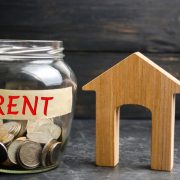Self-Directed Real Estate IRA Investors – Find Value in These Growing Smaller Cities
Value-seeking Self-Directed Real Estate IRA investors may want to look beyond high-priced tier-one coastal cities. After years of appreciation outpacing renter income, and with today’s record low interest rates, upside in markets like San Francisco, New York, Seattle, Boston and Miami may be limited. Many younger educated and technologically sophisticated workers are liberated by the Internet, and post coronavirus, they and their employers will have mastered a number of telecommuting technologies that will enable them to work from anywhere.
More of them are already moving to more attractively valued markets inland, according to research from the National Association of Realtors.
Self-Directed Real Estate IRA Investors – Consider These Ten Cities
The NAR went looking for cities that share the following characteristics:
- affordability
- solid job growth
- attracting large numbers of both retirees and millennials
- large numbers of recent college graduates who stay in town.
Only one of their top ten results has any oceanfront property whatsoever.
According to the National Association of Realtors, the top 10 housing markets positioned for growth in 2020 are:
- Boise City, Idaho
- McAllen-Edinburg-Mission, Texas
- Tucson, Arizona
- Chattanooga, Tennessee-Georgia
- Columbia, South Carolina
- Rochester, New York
- Colorado Springs, Colorado
- Winston-Salem, North Carolina
- Charleston-North Charleston, South Carolina
- Memphis, Tennessee-Mississippi-Arkansas
What is driving the trend? First, while the overall housing market experienced a slight slowdown in the number of sales in 2019, these ten cities managed to buck the trend, thanks to their continued affordability, healthy job growth, emerging technology centers driving wage growth, and quality of life.
Younger buyers and Self-Directed Real Estate IRA investors can get into these markets at a reasonable price point, as well: As of the end of 2019, the median asking price for homes in these markets was $292,000. Seven out of the ten cities were priced below the national median home price of $312,000 – a fact that helped drive solid price appreciation of 7.6% over the course of 2019, compared with a more sedate year-over-year price increase for other markets of similar population size of 4.3%, according to the National Association of Realtors.
These cities are also outpacing national averages in terms of local GDP growth and job growth.
Projected price growth is better in these markets, too: Prior to the coronavirus outbreak, the National Association of Realtors was projecting a national price decrease of 1.8%, but these ten markets were projected to rise by an average of 2.4%.
That is not spectacular, but much better than the vast majority of markets – especially when you take leverage into account.
The economic fallout of the coronavirus will no doubt pull these numbers downward, but they do not affect the long-term fundamentals: These houses will still be there long after the coronavirus pandemic runs its course. The pandemic may even increase the advantage of smaller cities, as more families decide they no longer want to roll the dice with every urban commute on a train, bus or subway.
Interested in learning more about Self-Directed IRAs? Contact American IRA, LLC at 866-7500-IRA (472) for a free consultation. Download our free guides or visit us online at www.AmericanIRA.com.










